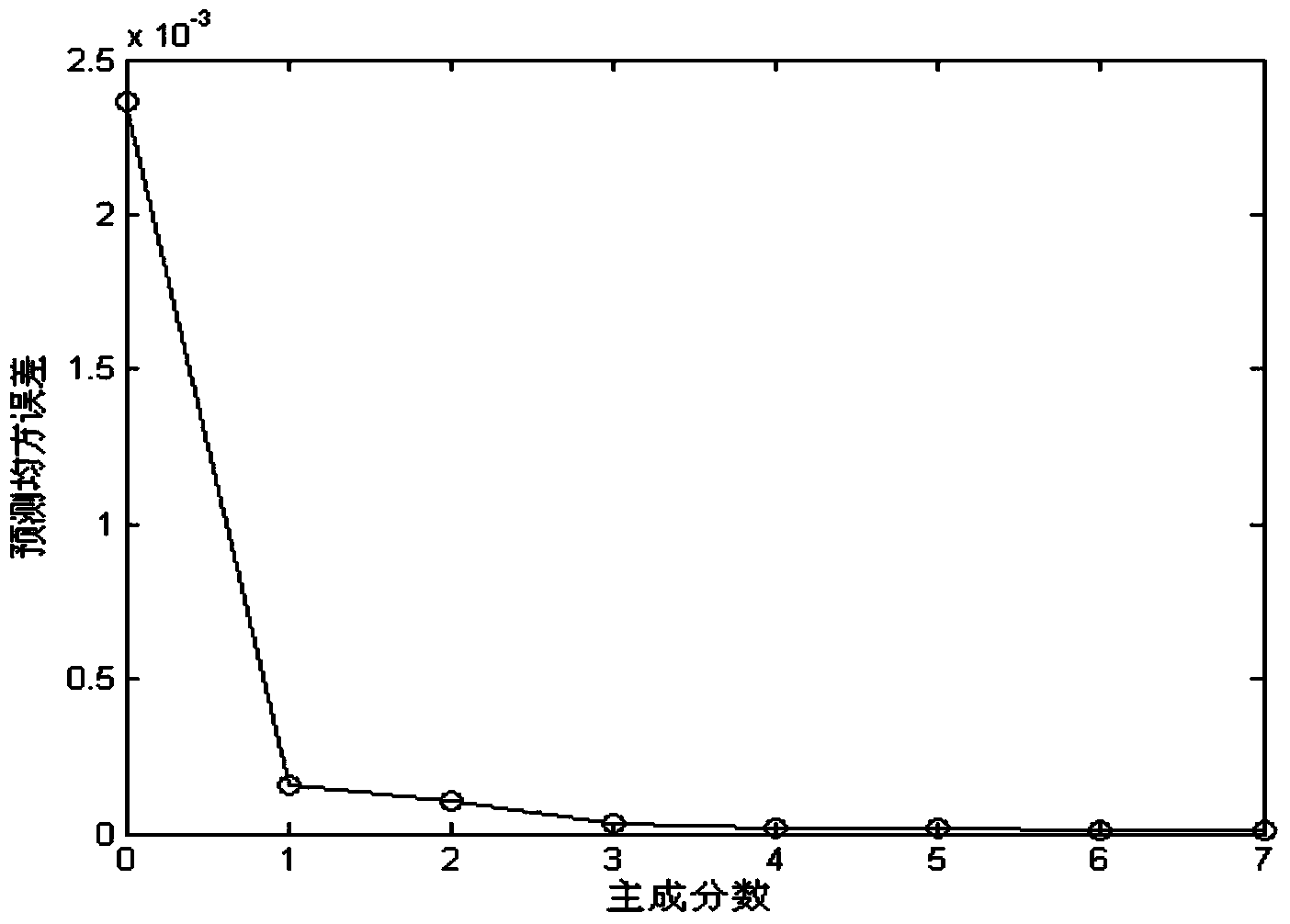Method for quantitatively detecting pesticide residue in grain through THz-TDS technology
A technology for quantitative detection and pesticide residues, applied in measurement devices, material analysis by optical means, instruments, etc., can solve problems such as affecting the authenticity of test samples, waste of drugs, etc., to achieve the effect of reliable identification model and analysis results.
- Summary
- Abstract
- Description
- Claims
- Application Information
AI Technical Summary
Problems solved by technology
Method used
Image
Examples
Embodiment 1
[0058] This embodiment provides a method for quantitatively detecting the content of acetamiprid in wheat samples using THz-TDS technology combined with chemometrics, wherein the "wheat sample" uses cake flour (Binzhou Taiyu wheat flour) that does not contain any pesticide residues. Co., Ltd.) was prepared after adding a known amount of acetamiprid (provided by Beijing Beina Chuanglian Biotechnology Research Institute), and the "wheat sample" was used as a blind sample for detection by the method of the present invention. The specific steps are as follows:
[0059] (1) Put the wheat flour for the cake into a pulverizer to pulverize, sieve (200 mesh), put into an oven and dry to obtain primary wheat powder; mix primary wheat powder and acetamiprid powder according to different mass ratios Mixed, transferred to an agate mortar and further ground to obtain the "wheat sample" fine powder, wherein the mass percentage of acetamiprid in the "wheat sample" was 0%, 0.5%, 1.0%, 1.5%, 2....
Embodiment 2
[0098] This embodiment provides a method for quantitatively detecting the content of carbaryl in rice samples using THz-TDS technology combined with chemometrics, wherein the "rice sample" uses rice that does not contain any pesticide residues (Jilin City Jiafu Rice Industry Co., Ltd. Co., Ltd.) was prepared by adding a known amount of carbaryl (provided by Beijing Beina Chuanglian Biotechnology Research Institute), and the "rice sample" was used as a blind sample for detection by the method of the present invention. The specific steps are as follows:
[0099] (1) The rice is put into a pulverizer to pulverize, sieved (100 mesh), put into an oven and dry to obtain rice powder; rice powder and carbaryl powder are mixed according to different mass ratios, and transferred to the agate laboratory. Further grind in a bowl to obtain the "rice sample" fine powder, wherein the mass percentages of carbaryl in the "rice sample" are 0%, 0.4%, 0.5%, 0.6%, 0.7%, 0.8%, 0.9% %, 1.0%, 2.0%, 3...
PUM
| Property | Measurement | Unit |
|---|---|---|
| Diameter | aaaaa | aaaaa |
| Thickness | aaaaa | aaaaa |
Abstract
Description
Claims
Application Information
 Login to View More
Login to View More - R&D
- Intellectual Property
- Life Sciences
- Materials
- Tech Scout
- Unparalleled Data Quality
- Higher Quality Content
- 60% Fewer Hallucinations
Browse by: Latest US Patents, China's latest patents, Technical Efficacy Thesaurus, Application Domain, Technology Topic, Popular Technical Reports.
© 2025 PatSnap. All rights reserved.Legal|Privacy policy|Modern Slavery Act Transparency Statement|Sitemap|About US| Contact US: help@patsnap.com



